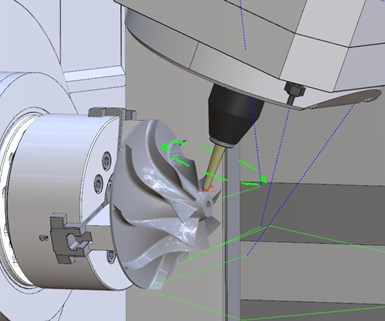CAMplete Releases TurnMill V9
Dedicated to Nakamura-Tome’s line of turning centers, version 9 of CAMplete’s TurnMill software includes enhancements to 3D rendering, simulation and postprocessing.
Share






Dedicated to Nakamura-Tome’s line of turning centers, version 9 of CAMplete’s TurnMill software includes enhancements to 3D rendering, simulation and postprocessing. The software is designed for combining output from all of a shop’s CAM systems to create multitasking programs that are verified and ready to run on the lathe.
Among the 3D viewing improvements are:
- Realistic rendering effects such as metal shading, reflection modeling, advanced lighting modeling and edge drawing, which all help highlight important geometric features;
- 3D space mouse support that works directly with the driver control panel user interface; and
- Hardware driver support for a wider variety of video cards, allowing users to run TruePath effectively on their existing laptops.
Among the improvements made to TurnMill’s simulation capabilities are:
- Collision Mode Pausing and Interpolation View allowing the user to precisely examine all points of motion, even between programmed points; and
- Improved 3D collision visualization to more easily see the interference of the 3D geometry during interactive machine jogging.
The revamped postprocessing engine is said to provide more flexibility for use with Mastercam and GibbsCAM. Intelligent decision-making algorithms limit wasted motion for better efficiency, according to CAMplete.
Related Content
-
2 Secondary Coordinate Systems You Should Know
Coordinate systems tell a CNC machine where to position the cutting tool during the program’s execution for any purpose that requires the cutting tool to move.
-
6 Machine Shop Essentials to Stay Competitive
If you want to streamline production and be competitive in the industry, you will need far more than a standard three-axis CNC mill or two-axis CNC lathe and a few measuring tools.
-
How to Mitigate Chatter to Boost Machining Rates
There are usually better solutions to chatter than just reducing the feed rate. Through vibration analysis, the chatter problem can be solved, enabling much higher metal removal rates, better quality and longer tool life.













